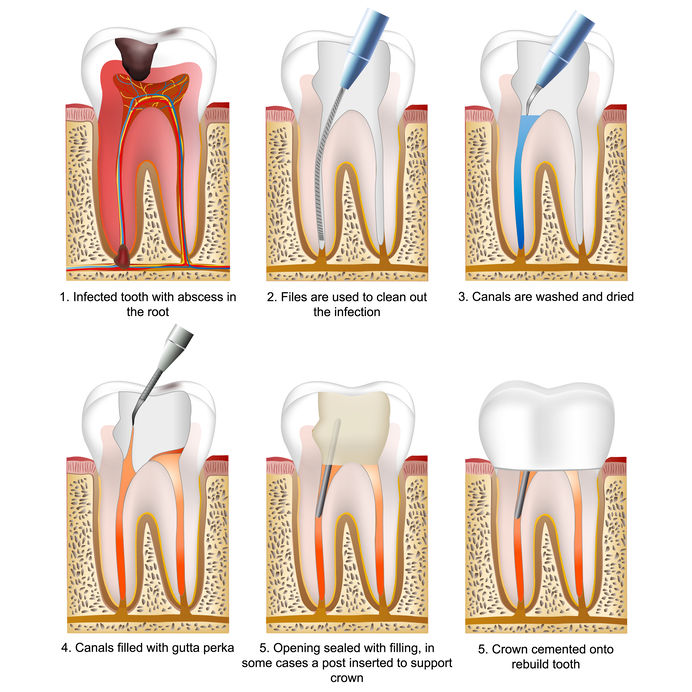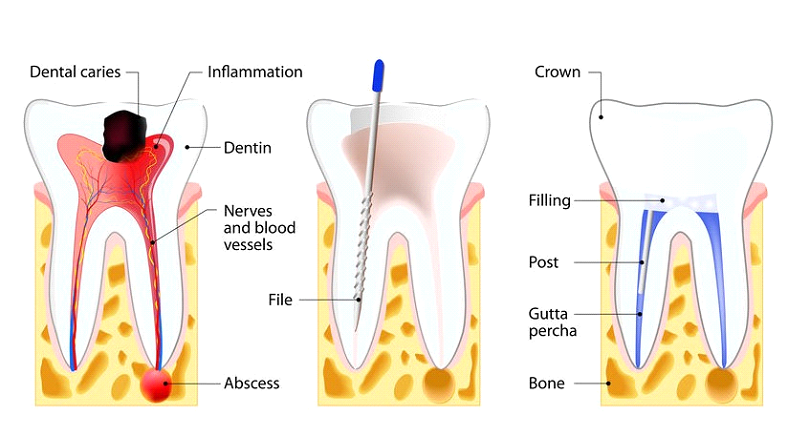Root Canals
When do I need a Root Canal?
- There are times that the soft tissue (pulp) inside the tooth that contains nerves and blood vessels may become irreversibly damaged and/or infected.
- This damage occurs because of deep decay, crack in tooth, traumatic injury, or repeated deep dental procedures.
- If untreated, the tissues in the pulp and around the root of your tooth can become inflamed causing pain, and if it worsens, can result in an infection, swelling and abscess.
- If the infection becomes severe enough it puts one at risk of losing their tooth completely because bacteria can damage the bone around the tooth so badly it won’t heal unless tooth is removed.
- Root canal therapy can remove the infected tissue in the pulp, and allow the infection and pain to be eliminated, and the tooth can be saved rather than extracted.

A root canal treatment usually takes 1 or 2 office visits to complete. There is little to no pain because your dentist will use local anesthesia, so you don’t feel the procedure. Once the procedure is complete, you should no longer feel the pain you felt before having it done.

- The procedure for doing the root canal therapy involves several steps. After anesthesia is given, an opening is made through top, or back in front teeth, of the tooth to access the affected pulp tissue.
- The tissue is removed, the pulp canals thoroughly debrided and cleaned, and then the pulp canals in the tooth roots are filled with a rubber-like substance (gutta percha) and sealer paste to seal to tooth roots to prevent future infections.
- A temporary filling is placed until a permanent restoration is made. An antibiotic may be prescribed if the infection has spread to the surrounding tissues, and a medication for pain may be prescribed if the infection and inflammation is severe. Your tooth and the area around it may feel sensitive for a few days.
- The procedure for placing a permanent restoration may involve a filling of the tooth is completely intact.
- If there is a crack in the tooth, big fillings present or extensive decay, usually restoring the tooth will involve placing a metal post inside one of the canals, building up missing tooth structure with filling material and then placing a crown to protect the tooth from further damage as the strength and structural integrity of the tooth is compromised.
- With proper care, the restored tooth can last many years, even the rest of your life.